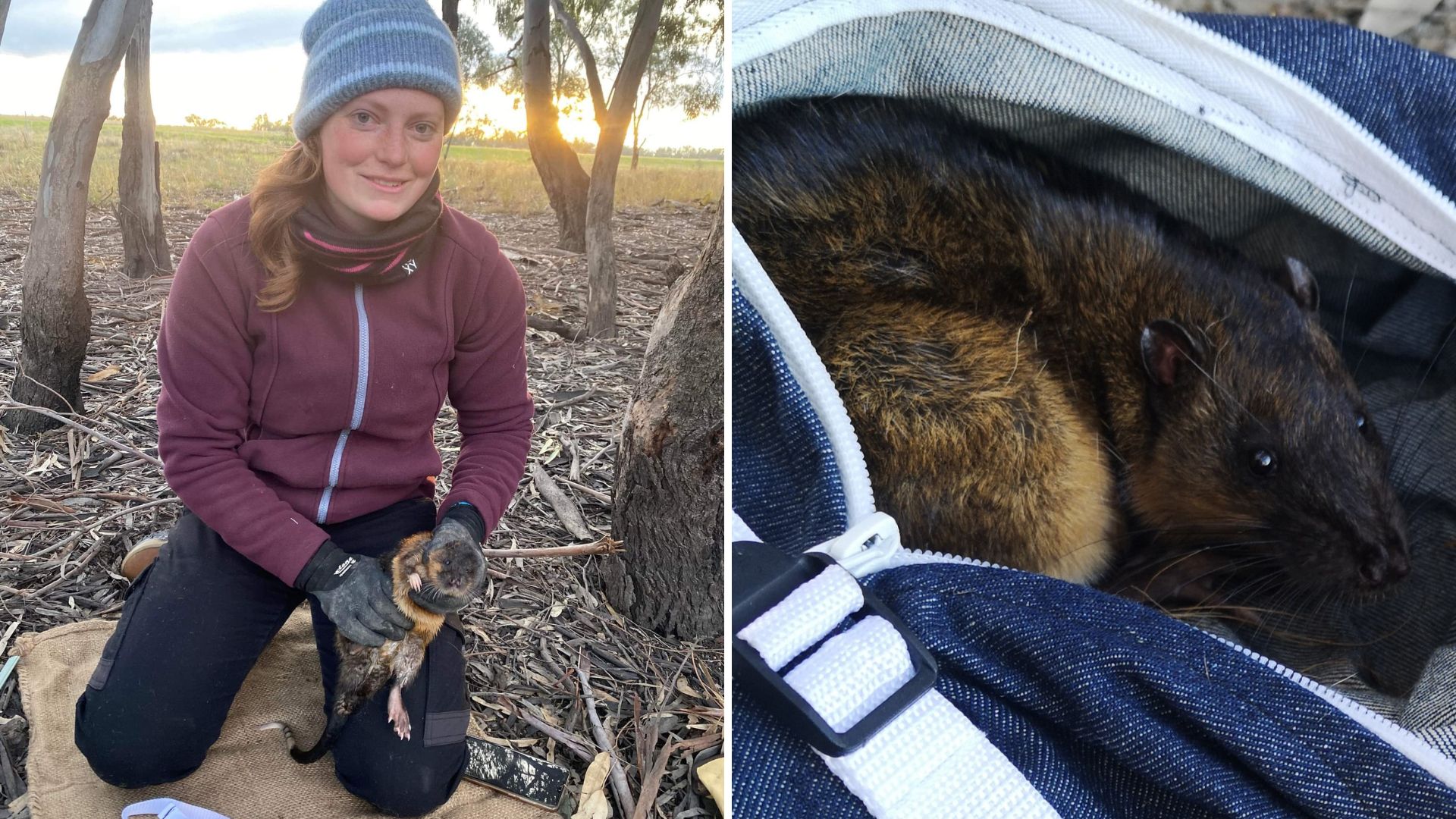- Charles Sturt PhD candidate investigates best methods to detect rakali
- The research was published in CSIRO Publishing’s Wildlife Research journal
- Rakali were monitored using visual surveys and live and camera trapping methods
A Charles Sturt University PhD candidate’s research investigating the elusive native Australian rakali has been published in a leading science journal.
PhD candidate Ms Emmalie Sanders researched the ecology of the rakali, or Australian water rat, to determine the effectiveness of various detection methods.
Her work, ‘Putting rakali in the spotlight: innovative methods for detecting an elusive semi-aquatic mammal’, has since been published in CSIRO Publishing’s Wildlife Research journal.
“Australia’s native wildlife and ecosystems are incredibly diverse and being able to monitor it more intricately is important to maintain its health and biodiversity,” Ms Sanders said.
“Rakali are a unique and charismatic semi-aquatic rodent native to Australia and found in most waterways, from rivers and creeks, lakes, irrigation channels and dams, or even in brackish and coastal waters.
“They are valuable members of their ecosystem and are easy to identify with their larger size, pale underbelly and white tip on their tail.
“The issue is that they’re not as well known by citizen scientists and can be incredibly trap aware, making them difficult to detect in some areas and leading to confusion around whether or not there are low numbers or simply low reporting rates in those areas.”
To determine the most effective method to monitor the species, Ms Sanders and her research team surveyed 14 sites across the Yanco Creek system in southern NSW using three main methods: visual surveys, live trapping and camera trapping.
“We compared visual surveys that were conducted at night and early morning; trapping using cage traps deployed on land and on floating platforms, and small box Elliott traps deployed on land; and camera traps set at three different angles,” Ms Sanders said.
“Two passive infrared (PIR) cameras were deployed on land near the edge of the water, one facing forward and one downward at a scent attractant.
“The third camera was set overlooking a floating platform deployed in the water.”
The team determined spotlighting at night was most effective, with six nights of 30-minute surveys yielding a 95 per cent probability of detection.
Camera traps overlooking a floating platform also achieved the same probability after 12 nights, while traps set on the platforms outperformed land-based traps. Forward-facing cameras were the least effective method, missing a third of rakali detections observed by the downward facing camera.
“We hope our findings can help inform other organisations to better include rakali in their monitoring programs and encourage the public to keep an eye out next time they are around a waterway,” Ms Sanders said.
The research was supervised by Dr Damian Michael, Professor Skye Wassens and Professor Dale Nimmo in the Charles Sturt Gulbali Institute for Agriculture, Water and Environment, as well as Dr James Turner with the Institute of Biomedical and Environmental Health Research at the University of the West of Scotland.
The public can also report any sightings of rakali online to iNaturalist or the Australian Platypus Conservancy.
ENDS






Social
Explore the world of social